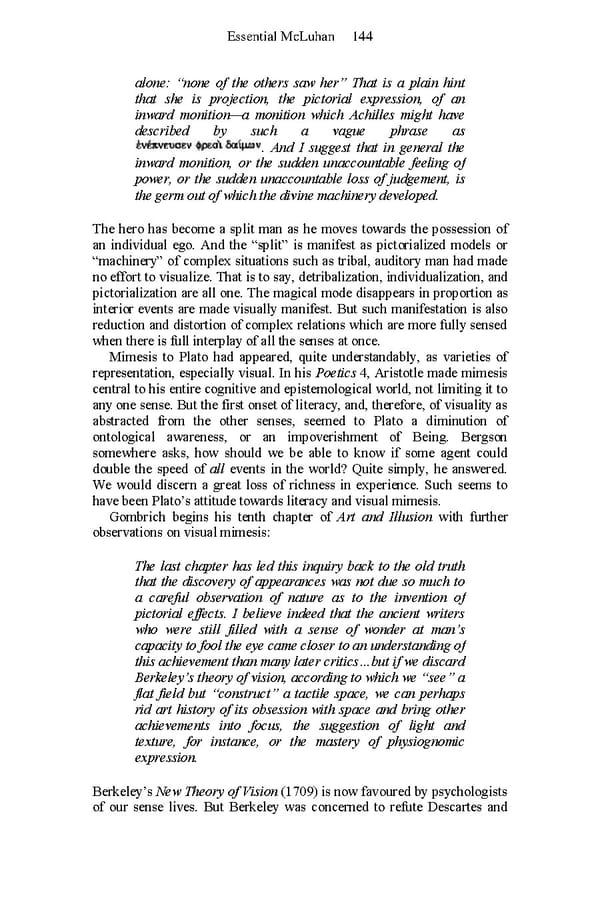Essential McLuhan 144 alone: “none of the others saw her” That is a plain hint that she is projection, the pictorial expression, of an inward monition—a monition which Achilles might have described by such a vague phrase as . And I suggest that in general the inward monition, or the sudden unaccountable feeling of power, or the sudden unaccountable loss of judgement, is the germ out of which the divine machinery developed. The hero has become a split man as he moves towards the possession of an individual ego. And the “split” is manifest as pictorialized models or “machinery” of complex situations such as tribal, auditory man had made no effort to visualize. That is to say, detribalization, individualization, and pictorialization are all one. The magical mode disappears in proportion as interior events are made visually manifest. But such manifestation is also reduction and distortion of complex relations which are more fully sensed when there is full interplay of all the senses at once. Mimesis to Plato had appeared, quite understandably, as varieties of representation, especially visual. In his Poetics 4, Aristotle made mimesis central to his entire cognitive and epistemological world, not limiting it to any one sense. But the first onset of literacy, and, therefore, of visuality as abstracted from the other senses, seemed to Plato a diminution of ontological awareness, or an impoverishment of Being. Bergson somewhere asks, how should we be able to know if some agent could double the speed of all events in the world? Quite simply, he answered. We would discern a great loss of richness in experience. Such seems to have been Plato’s attitude towards literacy and visual mimesis. Gombrich begins his tenth chapter of Art and Illusion with further observations on visual mimesis: The last chapter has led this inquiry back to the old truth that the discovery of appearances was not due so much to a careful observation of nature as to the invention of pictorial effects. I believe indeed that the ancient writers who were still filled with a sense of wonder at man’s capacity to fool the eye came closer to an understanding of this achievement than many later critics…but if we discard Berkeley’s theory of vision, according to which we “see” a flat field but “construct” a tactile space, we can perhaps rid art history of its obsession with space and bring other achievements into focus, the suggestion of light and texture, for instance, or the mastery of physiognomic expression. Berkeley’s New Theory of Vision (1709) is now favoured by psychologists of our sense lives. But Berkeley was concerned to refute Descartes and
 Essential McLuhan Page 150 Page 152
Essential McLuhan Page 150 Page 152